The way of old on the Kunisaki Peninsula
by Raina, staff writer of japan-guide.com
| previous post |
| next post |
2016/10/24 - The way of old on the Kunisaki Peninsula

For most locals, the first thing that comes to mind when talking about Oita Prefecture is its reputation as a hot spring destination. The prefecture has the most hot spring sources and the largest flow of hot spring water in the country, enough for it to be branded the "onsen prefecture". But today, my focus is not on hot springs, but on an oft-overlooked part of the prefecture, the Kunisaki Peninsula (Kunisaki Hanto).
The Kunisaki Peninsula is located in the north of the prefecture, sticking out into the sea. The peninsula is also where Oita Airport is located, making it the first port of entry for those who arrive by plane and an easy choice for those who want to explore the road less traveled. Mountains make up the interior, and farmland can be found on the low-lying land towards the coast. The two cities of Kunisaki and Bungo-Takada make up most of the peninsula.
The Kunisaki Peninsula is home to a unique local Buddhist culture, called "Rokugo Manzan", which contains elements of Buddhism, Shinto and mountain worship. An interesting fact about the Rokugo Manzan temples is that since they combine Buddhism and Shinto beliefs, their lower halls typically feature Buddhist statues, while Shinto gods are often enshrined in their upper halls. 2018 will be the 1300th anniversary of the Rokugo Manzan culture, and the temples and shrines on the peninsula are gearing up to celebrate the religion's long history.


Intrigued about the Rokugo Manzan culture, I wanted to check out the locations and activities that were central to the religion. Tourist offices are some of the best places to get local information, and I stopped by the ones in Kunisaki and Bungo-Takada cities before setting off to explore. The Kunisaki Tourist Information office at the Kunisaki Cycling Terminal not far from Oita Airport and the Bungo-Takada Tourist Information office at Showa no Machi near the Bungo-Takada Bus Terminal provide English assistance as well as English maps and brochures.







The flight from Tokyo's Haneda Airport to Oita Airport took about 100 minutes, and it wasn't long before I found myself on the trail of some amazingly old temples and hiking routes.
The Kunisaki Peninsula Ridge Long Trail is a 137 kilometer long hiking route that more or less follows the Rokugo Manzan mountain worship trail that connects the major temples and shrines on the peninsula. Walking the entire trail would take at least a week, but I only managed to walk some parts of the route because I was a little short on time this trip. I'm already looking forward to the next time when I can go back to attempt a longer hike.
On my first day, I visited the three temples of Futagoji, Iwatoji and Monjusenji. All three temples are connected by the trail and each have Nio guardians at their entrances. Their inner sanctuaries (okunoin) tend to be built into cliffs, as is common in the mountain worship practice.
Futagoji Temple has a history of 1300 years and is located near the peak of Mount Futago, the highest mountain in the middle of the Kunisaki Peninsula. Iwatoji Temple features the oldest Niomon statues on the peninsula, while Monjusenji Temple is one of the region's oldest temples.



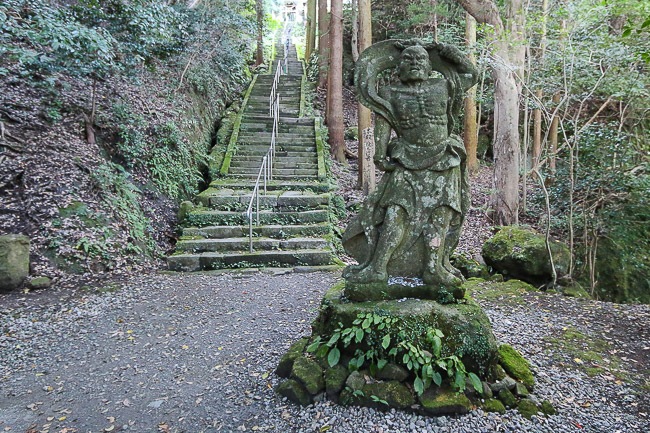
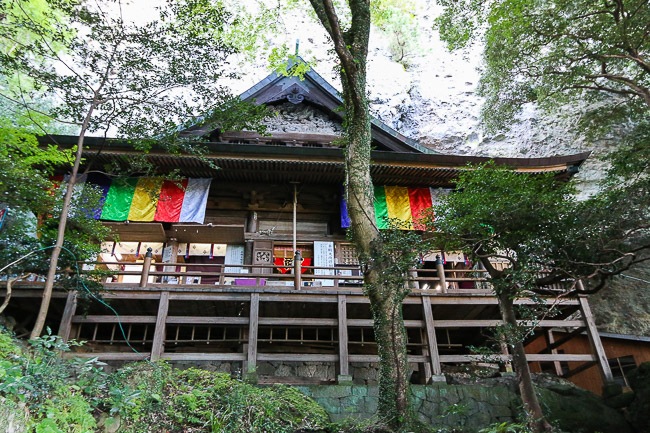


After visiting the three temples, I made my way to Petit Farm Tanaka, a local homestay. Similar to a minshuku, my homestay with the Tanaka family was a good way to meet the locals and experience some local activities. Unlike a minshuku where everything is provided, this felt more like staying at a relative's place. They brought me to the local public bath before heading back and tucking into a very delicious dinner prepared by Mrs. Tanaka. Farming activities are offered in the daytime, which sounds perfect for city dwellers to get back into nature.



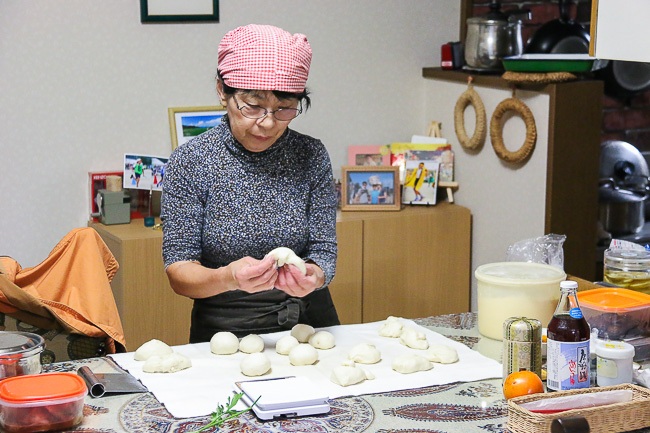
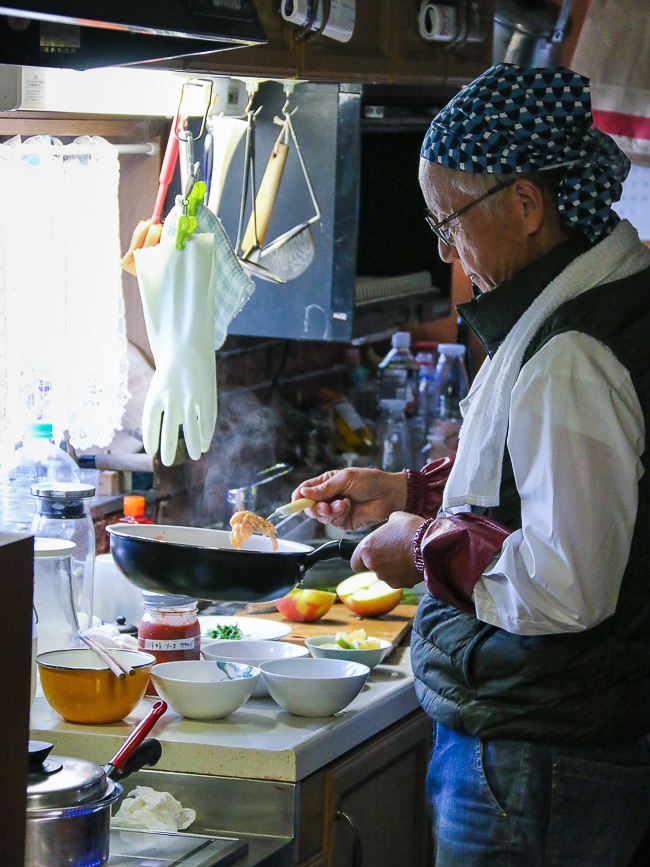


The next day, I bid the Tanakas farewell and hit the road again. Heading first to Ofudo Iwaya, a cave up in a cliff which offers a good view of the valley and forest below. From there I headed to the Kyu-Sentoji ruins, where you could see the remains of the former temple's foundations and the still standing Niomon guardians. The Fudosan Teahouse, a public rest house, is located further up from the Kyu-Sentoji ruins, and from where you could walk further up towards the top of the mountain.







Tennenji Temple was up next on the itinerary, including an incredible hike up to a stone bridge about 200 meters above ground. The hiking trail is part of the mountain worship trail known as mineiri, where worshipers would go on a pilgrimage trek. The return journey to the bridge and back from Tennenji takes about 1.5 hours.
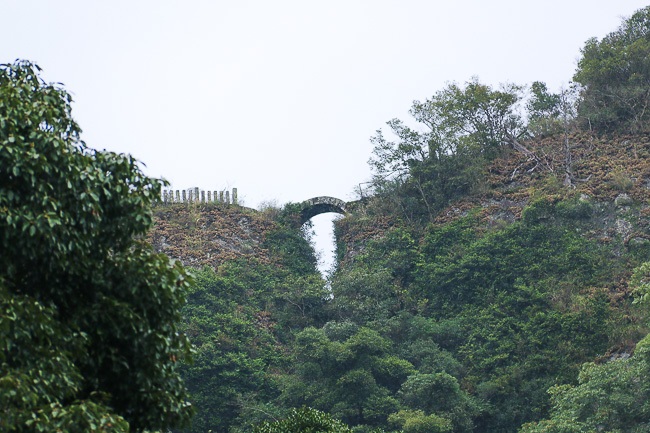





One of the major and unique events on the peninsula is the Shujo Oni-e festival, which was designated an Important Intangible Folk Cultural Property in 1977. Typically celebrated on the seventh day of the first month of the lunar calendar, the Shujo Oni-e festival allows one to meet with the gods. The gods, which take the form of scary looking creatures, come to take away the bad so that good can enter and remain. Priests don wooden masks to represent the gods and perform dance rituals with burning sticks to beat and chase bad luck away while calling for fortune.
This festival used to be performed at many temples across the Kunisaki Peninsula but is now only performed at three temples; Iwatoji, Tennenji and Jobutsuji. A good place to learn more about this interesting festival is the Oni-e no Sato history museum beside Tennenji.


Thus concluded my second day on the Kunisaki Peninsula, and I headed to Fukinoto Ryokan to stay for the night. The ryokan is actually owned by Fukiji Temple next door and run by the priest's family. Dinner included handmade soba noodles, a specialty of the Bungo-Takada region, and it was definitely welcomed after a long day. Staying beside Fukiji Temple meant that I was able to participate in morning meditation (zazen) offered at the temple, which I did the next day.
The main hall at Fukiji Temple is a designated national treasure and the oldest wooden structure in Kyushu, and that was where the morning zazen was held. The priest explained the structure of the hall and pointed out the cultural treasures inside after zazen, all this before breakfast!





With my head full of Buddhist history and my belly full from breakfast, I left for Tashibu no Sho, a village where the rice fields remain as they have been for over a thousand years. Unlike the newer farmland with its rectangular rice fields, the fields here come in many different shapes. I also visited a couple of small cliff temples and a cave temple in the area.



The last two stops on my trip were to Makiodo, a hall that displays wooden images of Amida Buddha, the four heavenly kings and a Fudomyoo statue sitting on a bull (that is said to be more impressive than a similar one in Kyoto), and the Kumano Magaibutsu Stone Buddha, two large stone carvings in the walls of a cliff. These stone carvings are the largest in Japan and can only be seen after climbing a long flight of stone stairs.



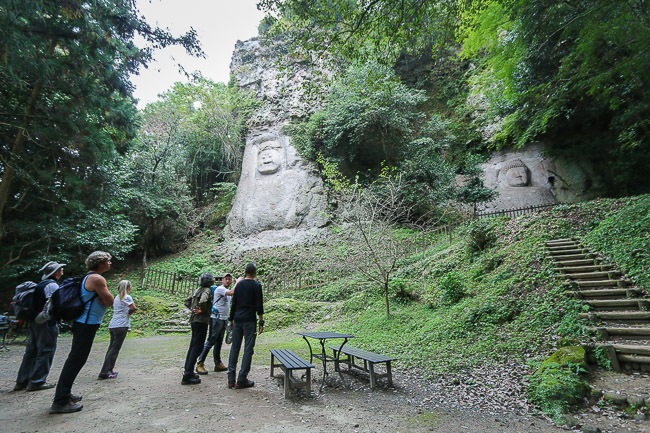
Just like that, I spent three days on the Kunisaki Peninsula and only covered a fraction of what is offered. There is so much more to discover on the peninsula, and I heard that one could even go in search of all the different Niomon guardians on the peninsula and find that all of them have different facial expressions and poses. So if you're on the hunt for traditional and cultural Japan, you should definitely put the Kunisaki Peninsula on your radar.
| previous post |
| next post |


